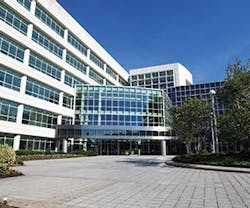Greening Campus- or Portfolio-Wide Operations
Improving the energy performance and environmental impact of multiple buildings can be a daunting task. Fortunately, USGBC offers a new workbook for doing so across campuses and portfolios.
“Trying to green the operations of various buildings can be a bit like trying to get all of your family members to go on a healthy diet and exercise program at the same time,” says Christopher Davis, manager of special projects at USGBC. “They have a range of ages, sizes, shapes, and activities. They consume different things in different quantities, and their aspirations vary widely.”
Successful implementation of a campus- or portfolio-wide green existing building program requires careful coordination with the right people at the right mind. Establishing a Culture of Performance on Your Campus utilizes LEED-EBOM as a tool for the comprehensive establishment of green practices and evaluation of performance both across the campus and within individual buildings.
This workbook provides a framework to make the process more straightforward and significant:
- The first stage is campus assessment, in which the institution should define the opportunity and overall aspirations and priorities, assign responsibility, and secure resources. This is the time to start considering major LEED fundamentals, like conducting audits and installing energy meters at each building.
- In the second stage of campus implementation, the team begins to align green policies and establish consistent methodologies for performance tracking. USGBC encourages registering the campus in LEED online and having those policies, plans, and other site-wide credits approved for streamlined use within individual building certification projects.
- The third stage is a building feasibility study that helps you determine which buildings are the best candidates for LEED-EBOM certification and which will require upgrades and retrofits to become eligible. This is especially useful as a tool for prioritizing the allocation of time and resources.
- The final stage is to run a pilot, measure performance over time, and submit for certification. After having earned one, you can refine your processes and move on to the next candidate.
This workbook is an idealized linear path, but many multi-building sites have already implemented exceptional green practices on their own. It’s all a matter of finding what works for you – just like diet and exercise.
